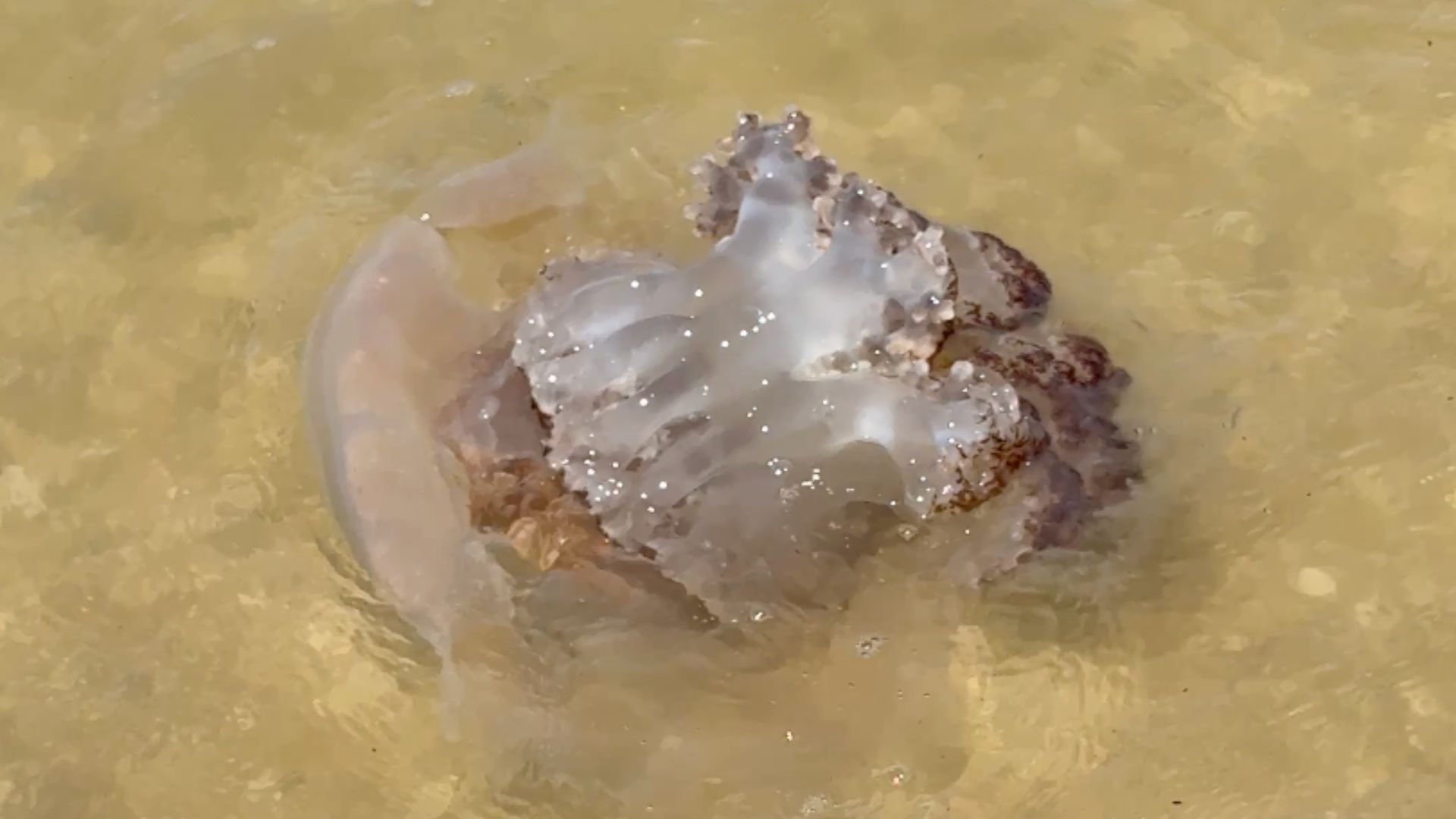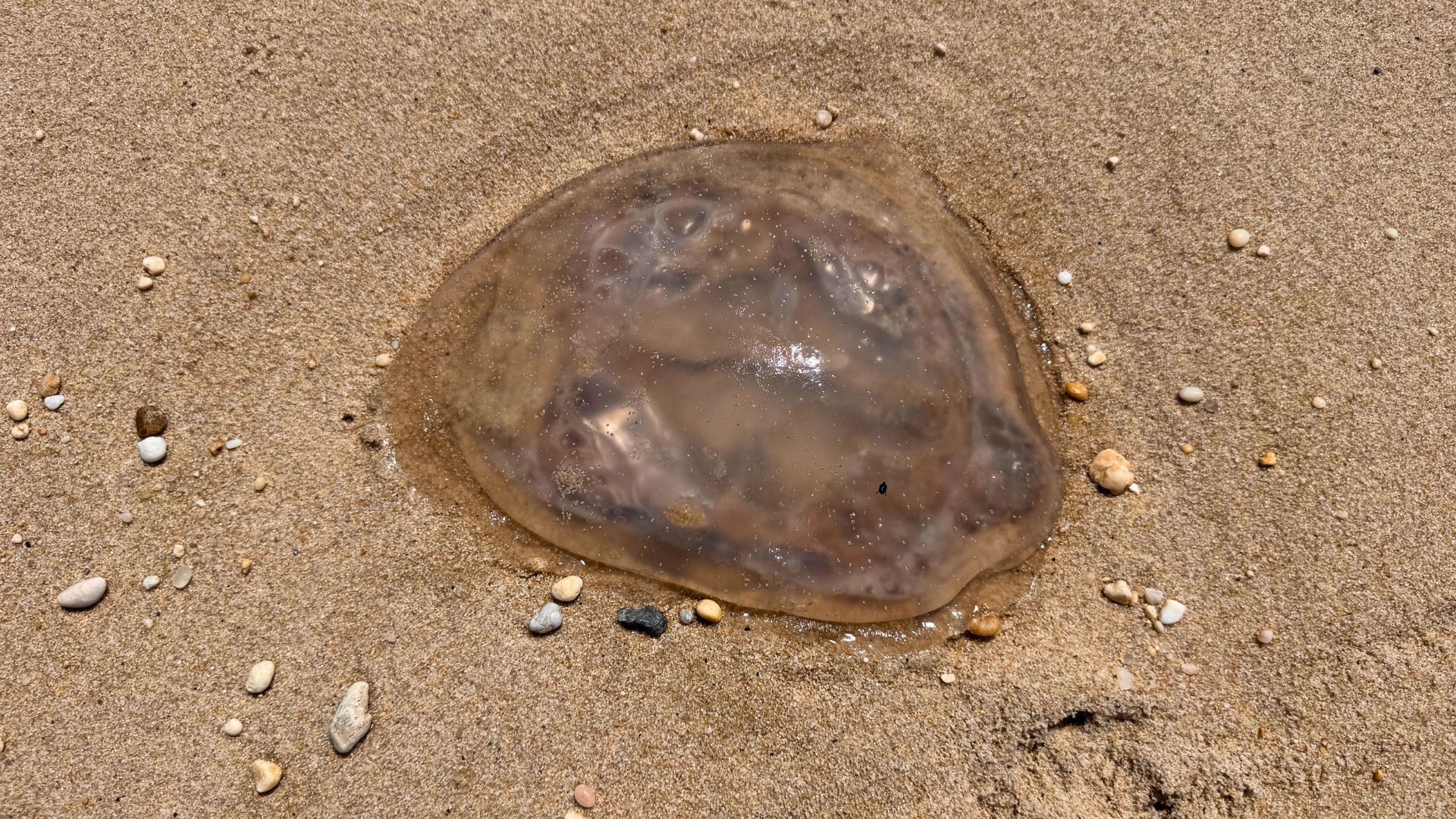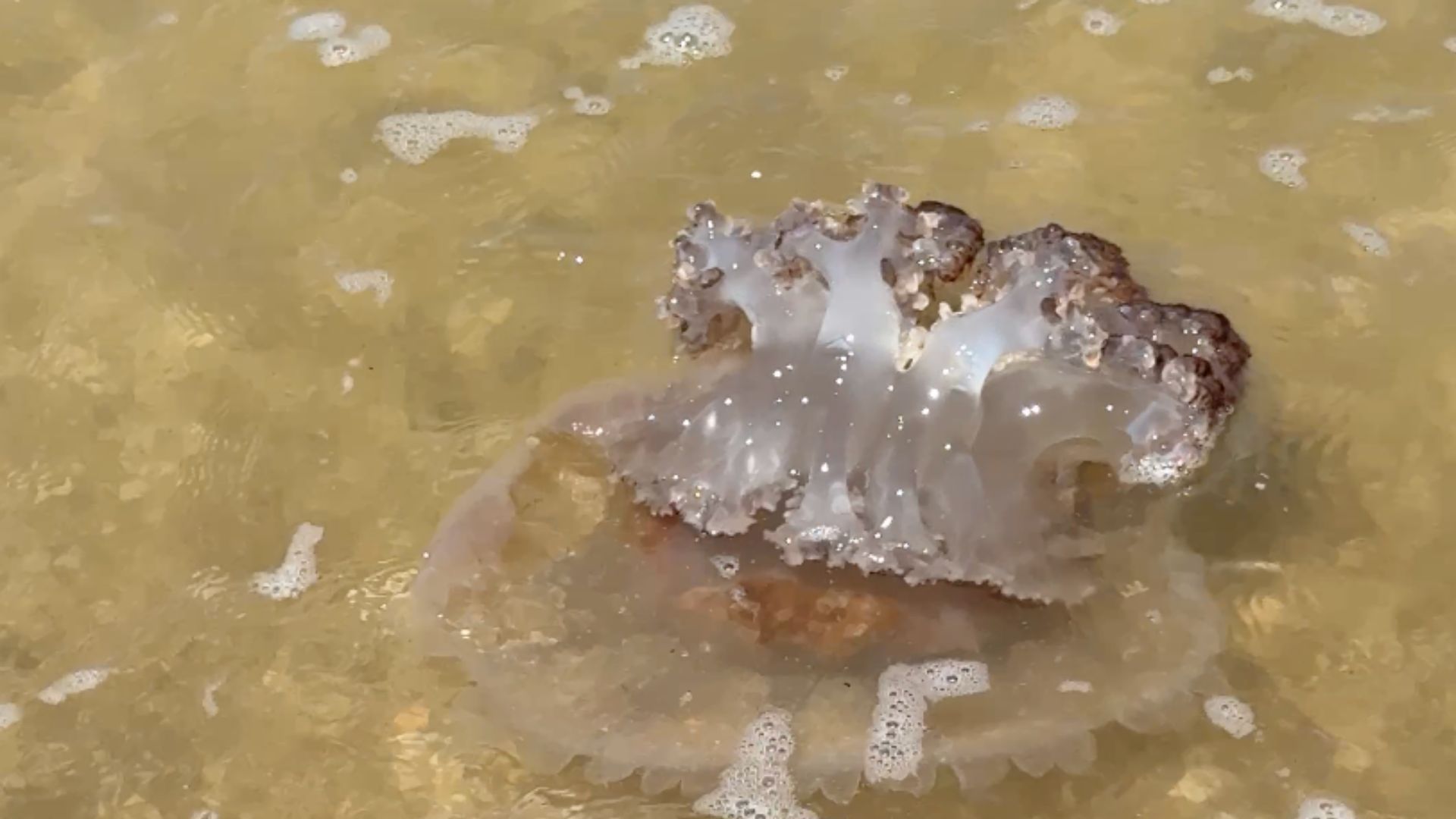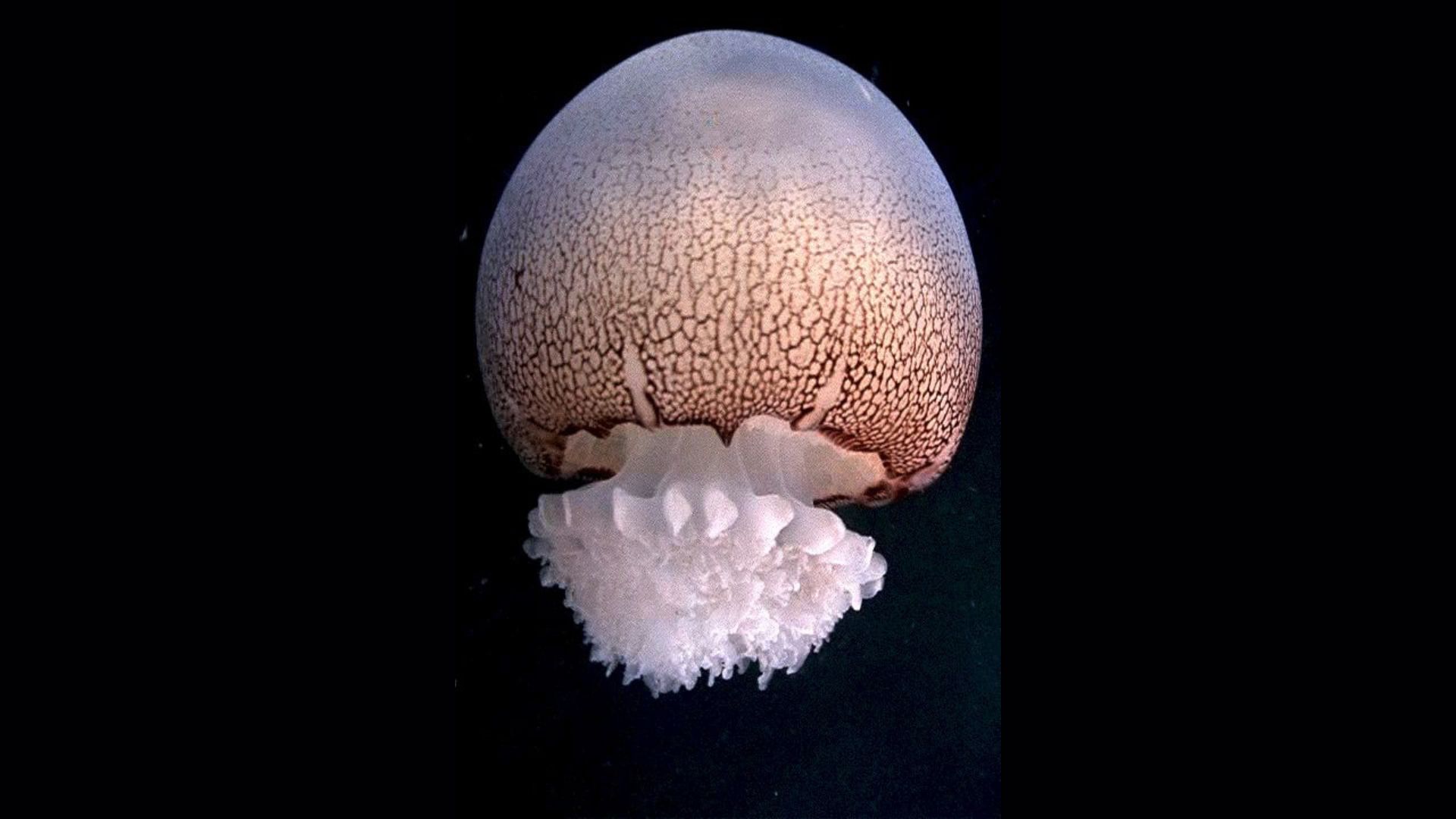Why Are These Jellyfish Washing Up in Cape May County?
If you’ve walked along the beach in Wildwood, North Wildwood, or Cape May lately, you’ve probably noticed something a little strange, tons of jelly-like blobs lining the shoreline.
These jellyfish are massive and have been rolling in and out of the waves before finally washing up on the beach.
 No, it’s not a sci-fi invasion.
No, it’s not a sci-fi invasion.
These are Cannonball Jellyfish, and they’ve been washing up in massive numbers across Cape May County.
The Wildwood Video Archive had gotten so many questions about them that we decided to go a little deep dive into them.
So what’s going on?

They also have a few different nicknames people call them such as cabbagehead or jellyballs.
These jellyfish are shaped like soft, round domes kind of like a squishy mushroom and typically measure about 6 to 10 inches wide.

Also See: What Happens When a Monster Storm Hits the Jersey Shore? – Shelf Cloud
In fact, many people can safely pick them up (though it’s always better not to touch wild marine life).

Once a bloom happens, Cannonball Jellyfish are mostly at the mercy of tides and winds. Recent breezy conditions have pushed large numbers of them toward the shoreline.
Another factor? Food. These jellyfish feed on plankton and fish larvae, and right now there’s likely an abundance of both just off our coast.

While they might look a little spooky covering the sand, they pose little to no risk to beachgoers.
Just be sure to keep pets and kids from poking at them—some people may experience mild skin irritation from their mucus. Otherwise, they’ll naturally break down or get eaten by seagulls and crabs over the next few days.
Nature is always putting on a show here at the Jersey Shore, and this jellyfish bloom is just the latest act.
So the next time you’re strolling the beach and see these translucent cannonballs scattered across the sand, you’ll know exactly what they are—and why they’re here.
Have a cool photo of the jellyfish on your local beach? Send it our way—we’d love to feature it!
